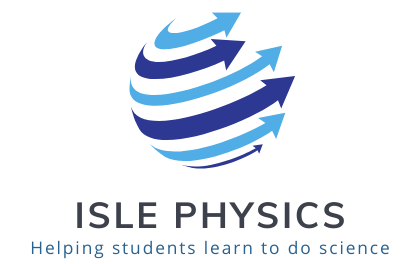Originally posted on November 22, 2021 from Eugenia Etkina & Gorazd Planinsic
Hello to you all! Today I continue with waves. After the students figured out the roles of a course and medium in a wave, let’s move to the waves that are created by a sinusoidally vibrating source (period of vibrations is T) in a medium where the wave travels at a speed v. Activities to examine are OALG 11.2.1 and 11.2.2. Here is the logical flow. Please do not forget to like the post if you read it.We ask the students to use the PHET simulation of a traveling wave to examine the motion of one dot in the simulation – it vibrates sinusoidally with a period T. Draw a graph y(t) for the dot – you see a sine curve. Then look at all other points – you can find many points along the propagation of the wave that move exactly the same way. The nearest points that move exactly the same way are called to be at a wavelength distance. Now, how long does it take for a vibration to spread this one wavelength from the source if the spreading occurs at a particular speed v? The students notice that it takes exactly the time that the source moves through one full vibration – one period T. Therefore we can write that the distance that the wave travels during the time equal to one period of the source is exactly the wavelength. In other words: lambda = vT. In this relation T is the property of the source, v is the property of the medium and wavelength is the result of both. This is a cause-effect relationship for the quantity of wavelength. The operational definition for wavelength is that is it the distance between two nearest points in a wave that vibrate EXACTLY the same way (we do not use the term “in phase” to avoid more new words, but this is what it means. We never use the “formula” v=lambda/T, or v=lambda Xf as v does not depend on those quantities.Download OALG Chapter 11 posted here and do these activities yourself to see how these ideas are constructed by the student with our scaffolding.Here is the text of the second activity in the sequence, the first one has graphical images that I cannot copy here.OALG 11.2.2 Represent and reasonOpen the PhET simulation at the following link:https://phet.colorado.edu/…/wave-on-a-string_en.html Set damping to “none”, set tension to “low”, select “no end”, and select “oscillate”.Now set the frequency to 0.5 Hz, check “rulers” and “timer”. You’re all set to go.a. Hit “restart” and observe the motion of every other green dot. As clearly as possible, describe what you see related to the relationship between the motions of the green dots.b. Construct a displacement-versus-time graph for one green dot on the string. Show the period T of that dot’s motion on your graph. (If the frequency is 0.5 Hz, what is the period?)c. Pause the simulation and construct a displacement-versus-position graph for a segment of the infinitely long string. Show the green dots, and number them 1, 2, 3, etc. Green dot number 1 is the one attached to the oscillator. What name shall we give to the distance between every other green dot?d. Pause the simulation, hit “restart”, and use “slow motion.” Now, let the simulation run. How long does it take for the front of the disturbance to get from dot 1 to dot 3? How long does it take for the front of the disturbance to get from dot 1 to dot 5? Step the simulation one frame at a time if needed.e. If the disturbance moves down the string at a constant speed v, come up with a mathematical relationship that relates the distance – lambda (the symbols do not appear here) between every other green dot to the period T of the oscillator and the speed v of the wave.Please do not forget to respond to the post to make it more visible!
I am posting this as continuation of Eugenia Etkina discussion on standing waves. PhET simulations are great also for helping students understand how standing waves are formed – in particular, why there is only one particular frequency that will produce given standing wave pattern (for a given length of the rope and a given speed of waves). For example, students can use PhET to produce the second harmonic on a rope (and test/explore the relationships between the relevant parameters) as shown in the following video https://youtu.be/-OPeSkKC88I – after reading about the process (see textbook CP E&A on page 337, figure 11.27.
And here is the same idea applied to the fundamental frequency:

